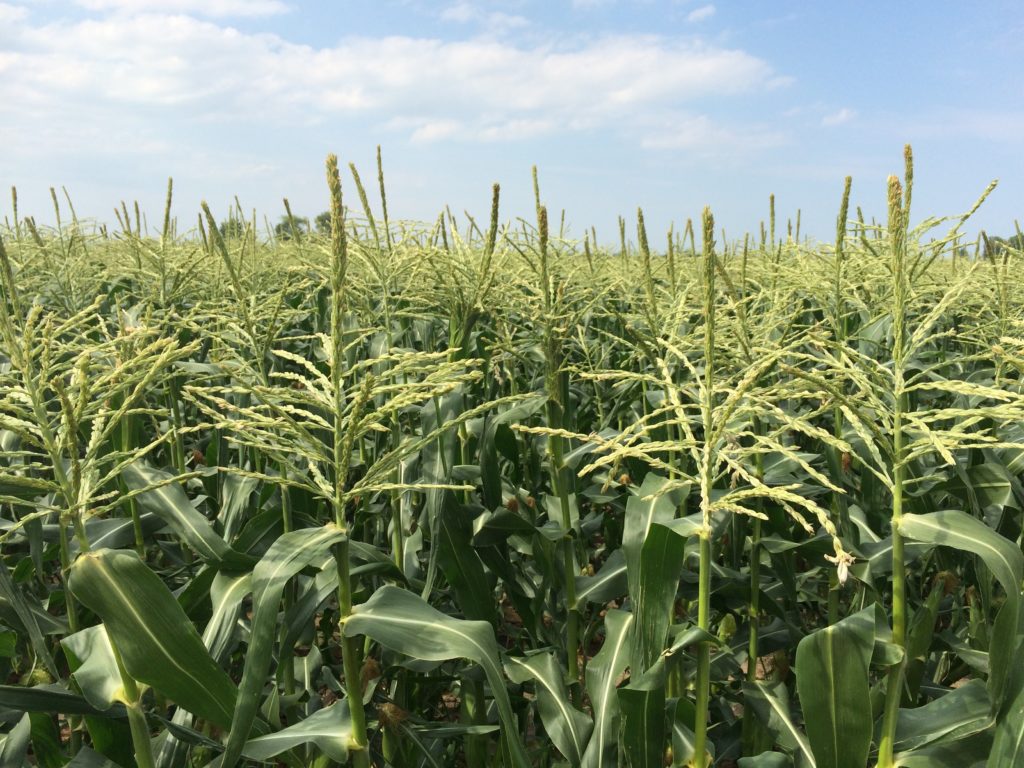The Difference Between Sweet Corn and Field Corn
Many people don’t realize the difference between sweet corn and field corn, despite both being staples in the American diet. A few years ago, while vacationing in Illinois, we saw a car pulled over by a field corn field. Two people were sneaking around, stealing a dozen ears of corn, and rushing back to their car. We chuckled and Kurt murmured, “Hope you enjoy that field corn, buddy!” Clearly, they had no idea they had picked the wrong corn to eat.

Sweet Corn
At our farm, we don’t raise sweet corn ourselves. Instead, we source it from David Bench Farms for our CSA farm share boxes and our online store. Our parents are experts at growing sweet corn, which is their specialty.
Characteristics and Growing Process:
- Plant Height: About 5 feet tall.
- Planting Time: Mid-April.
- Pollination: The tassels produce pollen that falls onto the silks of the ears. Each silk must be pollinated to form a kernel.
- Harvest Time: Mid-July at the earliest, when the stalks are still green.
- Harvest Method: All sweet corn is picked by hand, using a conveyor machine called “Veg-Veyer” to make the process easier. A tractor pulls the conveyor belt system, and pickers walk down the row, pulling one ear off each plant and throwing it onto the moving belt, which then takes the corn to a storage box for cooling.
- Storage: Must be eaten fresh within 7-10 days. Sugars in sweet corn begin to turn to starch as soon as it is harvested, so your sweet corn is sweetest when eaten raw out in the field, or within 2-3 days of harvest. (Don’t buy the stuff at the store if the husks look dry, because the corn will be starchy. Look for bright green husks).
Harvesting Experience: David’s crew pulls corn almost daily during the summer, often early in the morning to avoid the heat. Fields are usually wet with dew, so pickers wear protective clothing. The first picking is always exciting but becomes a chore after a few weeks. Experienced pickers can “feel” if a corn husk is ready for picking based on the plumpness at the top.
Parent’s Farming Practices: The sweet corn grown by our parents is non-GMO and raised using conventional farming practices.
Field Corn
Field corn is a commodity crop grown primarily for animal feed and processed foods. Most field corn in the United States is genetically modified. According to the USDA, about 94.1 million acres were planted with field corn in the US in 2023.
Characteristics and Growing Process:
- Plant Height: About 9 feet tall.
- Planting Time: Mid-April.
- Pollination: The tassels produce pollen that falls onto the silks of the ears. Each silk must be pollinated to form a kernel.
- Harvest Time: November, when the corn stalk has completely dried up and is no longer green. The corn husks have lost most of their moisture, and the kernels are dehydrated.
- Harvest Method: Combines are used to “shell” the corn, which is then loaded into grain trucks and taken to grain elevators or stored locally in silos for animal feed.
- Storage Time: Can be stored dry for up to a year if conditioned properly
This dried corn is then loaded into grain trucks and hauled to the grain elevators for sale, or stored locally on the farm in a silo to feed to animals over the winter. Corn that is sold to the grain elevators (like the Andersons or Archer Daniels Midland in Toledo) is often stored in these locations for long periods of time, and shipped via vessel across oceans or over land by rail. Each grain elevator has a U.S. inspector inspecting the corn as it is loaded onto vessels, making sure that it passes certain grade levels. A certain percentage of damage (spoiled product) is allowed and is “blended in” with the good corn before being loaded onto vessels.
Post-Harvest Use: Field corn is used in various ways:
- Livestock Feed: Stored locally for feeding animals over the winter.
- Ethanol Production: Made into fuel.
- Food Additives: Used in products like high fructose corn syrup, corn flour, corn meal, grits, hominy, nixtamal, tortillas, corn bread, corn oil, and alcohol. Check food ingredient labels for “corn syrup” or “corn starch” to see where field corn is used.
Here’s a quick video to show you the difference between field corn and sweet corn.
By understanding the distinct differences between sweet corn and field corn, you can appreciate the specific uses and characteristics of each type. Sweet corn is a delicious treat for human consumption, while field corn serves a variety of industrial and agricultural purposes.
